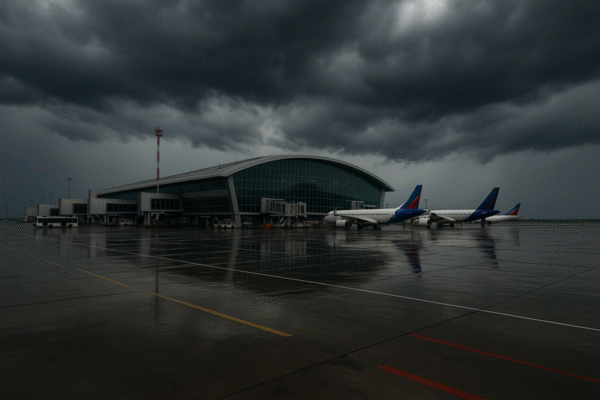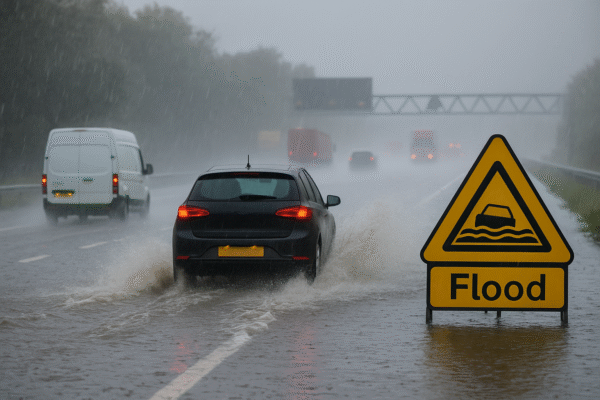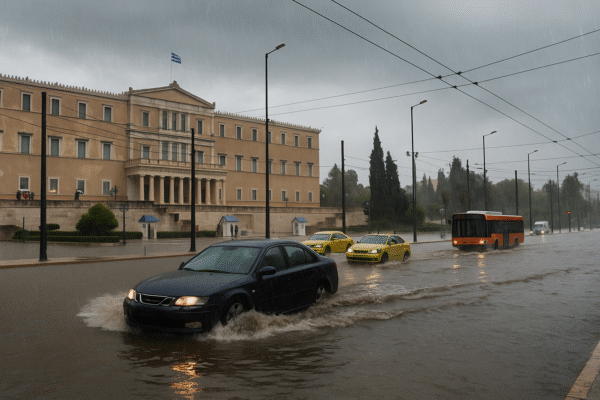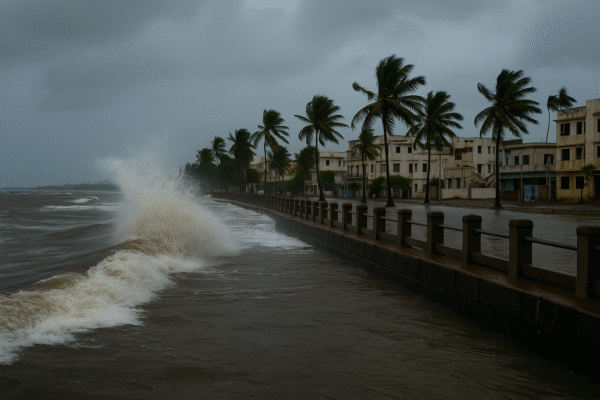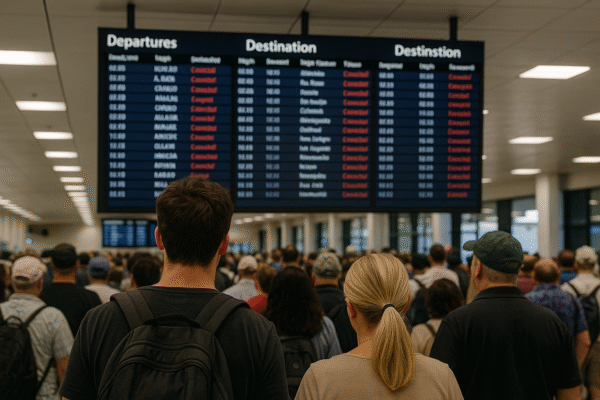The United Kingdom has been gripped by the fury of Storm Amy, one of the most powerful autumn storms in recent memory. With wind gusts recorded at nearly 100 mph in parts of Scotland and Northern Ireland, combined with relentless downpours, the storm has left behind a trail of travel disruption, damaged infrastructure, and stranded holidaymakers. For a nation that relies heavily on tourism, especially during autumn and the festive build-up, the impact has been profound.
Public transport networks including trains, ferries, and flights faced cancellations and delays. Roads were blocked by fallen trees and flooding, leaving tourists and residents grappling with uncertainty in their travel plans. From the Scottish Highlands to the southern coasts of England, visitors have been forced to adjust itineraries, while businesses in hospitality and leisure brace for financial strain.
Tourism Disruption Across the UK
Scotland and Northern Ireland:
The north bore the brunt of the storm, with gusts of 96 mph recorded on Tiree in the Inner Hebrides and 92 mph in County Londonderry. These hurricane-force winds forced the closure of scenic ferries that normally connect island communities—routes often used by tourists exploring the Highlands and islands. Popular hiking trails and nature reserves in Scotland’s national parks also saw temporary closures for safety reasons.
Hotels across storm-hit areas reported last-minute cancellations as travelers chose to postpone trips rather than risk dangerous journeys. For rural tourism operators, who depend on autumn visitors, the timing could not have been worse.
England and Wales:
In England and Wales, rail services faced heavy disruption, with debris on tracks and overhead line damage causing delays. Roads to coastal holiday destinations in Cornwall, Devon, and Wales were flooded, stranding tourists in villages and small towns. Iconic attractions, including coastal walking paths, theme parks, and heritage sites, were forced to shut down temporarily due to high winds.
While London escaped the most severe conditions, train routes linking the capital with the rest of the UK suffered delays, leaving international tourists arriving through Heathrow and Gatwick struggling to reach planned destinations.
Record-Breaking Low Pressure
One of the most remarkable aspects of Storm Amy is the record-breaking atmospheric pressure it brought. On Shetland’s Baltasound, meteorologists recorded a central pressure of 947.9 hPa, the lowest October pressure ever recorded in the UK. This deep system explains the ferocity of the storm, with such low pressure commonly linked to extreme winds and prolonged heavy rain.
The UK Met Office issued both amber and yellow warnings, urging people to avoid unnecessary travel. Amber warnings covered northern Scotland and parts of Northern Ireland, highlighting life-threatening conditions, while yellow warnings extended across much of England and Wales.
Impact on the Travel and Tourism Industry
The UK tourism industry, already challenged by economic uncertainty and changing travel habits, faced immediate strain. Rail operators canceled journeys, ferry companies suspended crossings, and airlines diverted flights. These decisions, though necessary for safety, resulted in thousands of stranded passengers.
Holidaymakers in affected areas found themselves cut off from planned tours, while rural guesthouses and B&Bs had to issue refunds for bookings they could not honor. Travel insurance firms reported a surge in claims related to cancellations and weather-related damage.
Even city-based tourism was hit, with museums, castles, and cultural attractions across northern England and Scotland reducing operating hours due to safety risks.
Emergency Response and Public Safety
Emergency services were stretched as high winds caused widespread power outages, leaving thousands of homes and businesses in darkness. Fallen power lines, blocked roads, and flooding posed significant risks. Local councils worked with police and fire services to clear debris, restore electricity, and ensure tourist hotspots were safe for reopening.
Coastal towns issued flood alerts, particularly along western shorelines, where waves battered sea walls and promenades. Lifeboat crews and coastguards remained on high alert, advising the public to stay away from beaches and piers during the storm surge.
Looking Ahead: Recovery and Next Storm
The Met Office confirmed that as Storm Amy moves into the North Sea, conditions will gradually improve by Sunday. Winds are expected to ease, and drier weather will bring some respite for travelers. However, the aftermath of the storm—fallen trees, damaged infrastructure, and disrupted schedules—means the tourism industry will need time to recover.
Already, eyes are turning to the next named storm, Storm Bram, which could affect parts of the UK in the weeks ahead. Authorities stress the importance of staying alert to weather updates, as the storm-naming system has proven vital in raising public awareness and encouraging preparation.
Resilience in the Face of Storms
The UK has long dealt with unpredictable weather, but Storm Amy highlights the challenges of modern tourism in the face of climate extremes. From international visitors exploring cultural landmarks to domestic travelers on autumn breaks, severe weather events test both the resilience of the travel sector and the adaptability of holidaymakers.
For those planning trips, the key takeaway is clear: always monitor weather forecasts, remain flexible with itineraries, and prioritize safety over schedules. While the storm has left a temporary mark on UK tourism, the nation’s diverse attractions, from historic castles to vibrant cities, remain as resilient as ever, ready to welcome visitors once conditions settle.
For more travel news like this, keep reading Global Travel Wire




